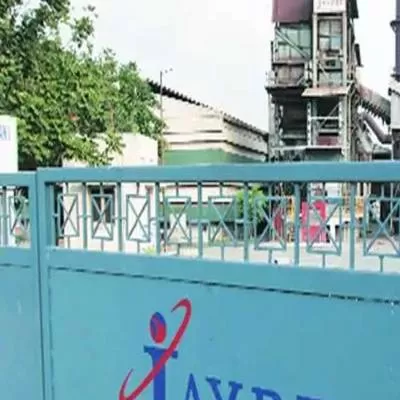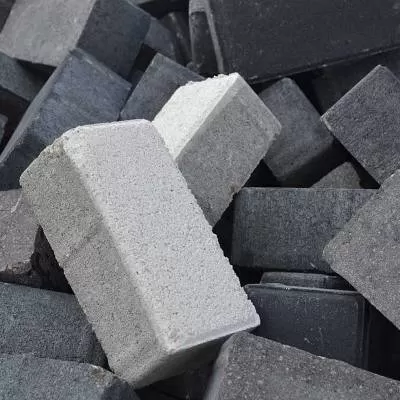- Home
- Building Material
- Concrete
- Concrete Pumps - An Attractive Option for Precast Operations
Concrete Pumps - An Attractive Option for Precast Operations
In a conventional construction site setting, the efficiency of concrete pumps that are used as flexible equipment to convey the most diverse types of concrete is undisputed. At precast plants, however, such pumps continue to be considered as an exception to the rule despite several decades of technical innovation in the precast industry. This is due to the approach taken by the precast industry itself but also a result of the concrete pump manufacturers' neglect of this market.
The recent past has shown that concrete pumps are indeed an attractive option for precast operations. On the technical side, the trend towards more flowable concrete mixes should be mentioned as a key milestone in this direction, although concrete need not be flowable to be pumped. High labour costs and a decline in prices, seen especially in conventional precast prompt many businesses to seek more flexible solutions based on complete systems that require fewer people. This is where concrete pumps open up opportunities for optimisation.
Interesting options
From a production point of view, too, solutions based on concrete pumps provide particularly interesting options. For instance, complex moulds can be easily filled from the bottom while ensuring premium surface quality. Pumps also provide a continuous concrete flow that can be utilised to increase production output to many times the previous level and to achieve a better, more effective mixing of the individual concrete batches (the mix becomes more homogeneous). Unlike the conventional mould-filling process using buckets operated by a crane, this approach frees up crane capacity and enables simultaneous efficient workflows.
Reference projects have demonstrated that it is possible, and useful, for precast plants to integrate concrete pumping systems in the production line regardless of the concrete volume to be processed per day and of the product range manufactured (walls, pipes, manholes, custom-made elements, etc). These examples show that comprehensive, pump-based solutions can be useful not only for small businesses with a daily concrete flow of approx 20 cu m (picture 1) but also for large producers with a daily flow of several hundred cubic metres (picture 2). Among other factors, such as conveying distance and planned flow rate, the implementation of an entire system based on concrete pumps is heavily dependent on the type and quality of the concrete. If the concrete can be pumped (for this purpose, consider, amongst other relevant parameters, its grading curve, maximum aggregate size, powder ratio, additives/admixtures, w/c ratio), the choice of an appropriate pump type is of crucial importance to the entire production process. Rotor pumps (picture 3) are characterised by their low-noise operation, accurate batching capability and short-to-medium conveying distances, whereas piston pumps are particularly well-suited to conveying larger volumes over longer distances and at higher pressures.
Large variety
The great variety of available pump types and specifications results in a wide range of system component options that come at most diverse cost levels and are suitable for various fields of application. Precast businesses that are determined to retain their competitive edge in the future will be required to use efficient and flexible concrete conveying and mould filling systems. The growing appreciation of concrete pump systems in the precast industry will result in an increasingly broader use and acceptance of these systems.
(Communication by the management of the company)
Bernd Maerkert, Head of Precast Concrete Applications, Putzmeister Concrete Pumps GmbH, Germany highlights the efficiency of concrete pumps and the available options in the industry.In a conventional construction site setting, the efficiency of concrete pumps that are used as flexible equipment to convey the most diverse types of concrete is undisputed. At precast plants, however, such pumps continue to be considered as an exception to the rule despite several decades of technical innovation in the precast industry. This is due to the approach taken by the precast industry itself but also a result of the concrete pump manufacturers' neglect of this market.The recent past has shown that concrete pumps are indeed an attractive option for precast operations. On the technical side, the trend towards more flowable concrete mixes should be mentioned as a key milestone in this direction, although concrete need not be flowable to be pumped. High labour costs and a decline in prices, seen especially in conventional precast prompt many businesses to seek more flexible solutions based on complete systems that require fewer people. This is where concrete pumps open up opportunities for optimisation.Interesting optionsFrom a production point of view, too, solutions based on concrete pumps provide particularly interesting options. For instance, complex moulds can be easily filled from the bottom while ensuring premium surface quality. Pumps also provide a continuous concrete flow that can be utilised to increase production output to many times the previous level and to achieve a better, more effective mixing of the individual concrete batches (the mix becomes more homogeneous). Unlike the conventional mould-filling process using buckets operated by a crane, this approach frees up crane capacity and enables simultaneous efficient workflows. Reference projects have demonstrated that it is possible, and useful, for precast plants to integrate concrete pumping systems in the production line regardless of the concrete volume to be processed per day and of the product range manufactured (walls, pipes, manholes, custom-made elements, etc). These examples show that comprehensive, pump-based solutions can be useful not only for small businesses with a daily concrete flow of approx 20 cu m (picture 1) but also for large producers with a daily flow of several hundred cubic metres (picture 2). Among other factors, such as conveying distance and planned flow rate, the implementation of an entire system based on concrete pumps is heavily dependent on the type and quality of the concrete. If the concrete can be pumped (for this purpose, consider, amongst other relevant parameters, its grading curve, maximum aggregate size, powder ratio, additives/admixtures, w/c ratio), the choice of an appropriate pump type is of crucial importance to the entire production process. Rotor pumps (picture 3) are characterised by their low-noise operation, accurate batching capability and short-to-medium conveying distances, whereas piston pumps are particularly well-suited to conveying larger volumes over longer distances and at higher pressures.Large varietyThe great variety of available pump types and specifications results in a wide range of system component options that come at most diverse cost levels and are suitable for various fields of application. Precast businesses that are determined to retain their competitive edge in the future will be required to use efficient and flexible concrete conveying and mould filling systems. The growing appreciation of concrete pump systems in the precast industry will result in an increasingly broader use and acceptance of these systems.(Communication by the management of the company)
























